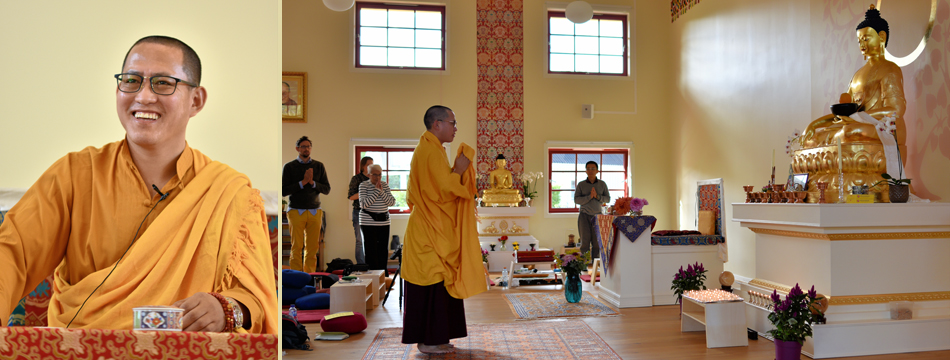In Tibetan Buddhism, on the spiritual path to enlightenment, one often practices a mantra recitation connected to a corresponding deity .
Daily mantra practice can benefit study, career, achievement and wealth. By practicing altruism, all can be successful in reaching their own enlightenment step by step, and reach the highest level.
I personally do Chenrezig meditation, reciting the famous “Om Mani Padme Hung” mantra. This mantra is the most important mantra for Tibetan Buddhists.
In simple terms, a straight forward interpretation of “Om Mani Padma Hung” is:
Om: Represents the practitioners body, speech and mind.
Mani: The treasure, with which you can relieve poverty. It is also a symbol of skilful means, altruistic budhicitta, compassion and love.
Padme: In Sanskrit, it means “Lotus”. It is the unstained lotus of wisdom. Chenrezig, the deity representing the compassionate aspect of Buddha, is not only compassionate. He also has wisdom.
Hung: The compassion and wisdom are indivisible, and united in one pure equality.
Sometimes, a “Phat” is added to the mantra. The “Phat” is a seed syllable that strengthens the Bodhisattva intention of benefitting all sentient beings.
It is appropriate to recite this mantra with reverence and a focused mind towards the Buddha, as this will produce incredible merit. When the recitation is complete, give the merit back to all sentient beings, and wish them to be free from all suffering.
Practicing mantra can clear karma, and change the fate by turning things around, such that the negative becomes positive, danger becomes peace, and evil becomes auspicious. All the world will benefit by this practice of altruism.
-Sangpo Rinpoche
